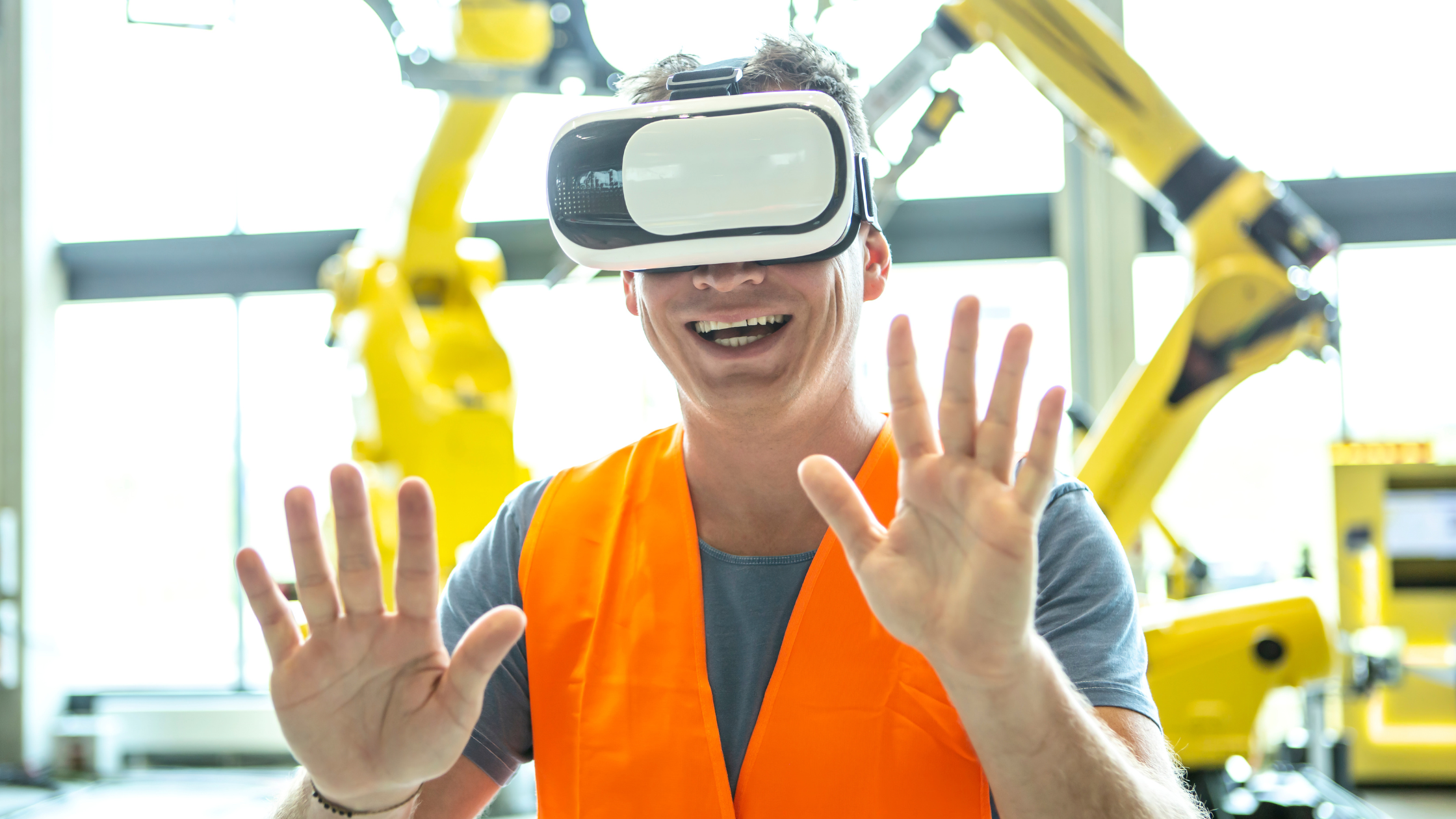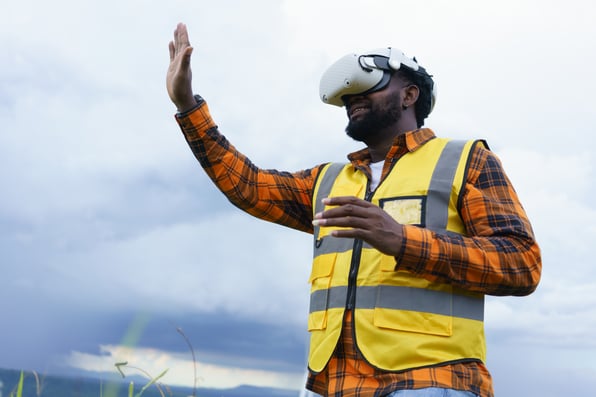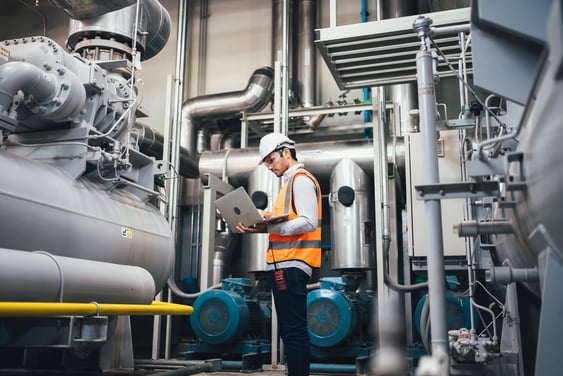How to Effectively Manage Contractor and Supplier Safety
Ensure contractor and supplier safety with technology-driven solutions. Learn key challenges, best practices, and how EHS Insight streamlines...
Discover innovative safety technologies and strategies transforming high-risk industries for a safer work environment. Explore advancements in tech, emergency response, and risk mitigation.

High-risk industries, from construction and mining to oil and gas and healthcare, operate on a constant tightrope balance between maximizing efficiency and prioritizing worker safety.
However, with technological advancements, emergency response planning, and risk mitigation strategies, these industries are finding innovative ways to tilt the scales toward a safer work environment. Let’s explore some of the exciting developments leading the charge.
Technology is driving the way forward significantly in providing better safety in high-risk industries. Even just a cursory glance reveals innovations such as:

Yet the realm of safety advancements stretches far beyond the examples listed above. Let’s delve deeper into some specific “Tech Titans” revolutionizing safety in high-risk industries:
Exoskeletons: Imagine workers in construction or manufacturing seamlessly lifting heavy objects without strain. Exoskeletons like Ekso Bionics‘ Guardian exosuit are making this a reality. These robotic suits transfer weight and provide support, reducing fatigue and risk of musculoskeletal injuries.
Intelligent Drones: Forget pre-programmed flight paths. Intelligent drones like those developed by DJI Enterprise are equipped with collision avoidance technology and AI-powered object recognition. These drones can inspect pipelines, survey disaster zones, and even deliver medical supplies in remote areas, minimizing human exposure to risks.
Digital Twins: Building exact virtual replicas of physical assets, often powered by IoT sensors, creates “digital twins.” These twins allow companies to simulate potential issues, test safety protocols virtually, and identify hazards before they occur. Imagine practicing a complex refinery shutdown procedure in a safe, digital environment before executing it in real life.
Connected Worker Solutions: Real-time communication and location tracking are crucial in high-risk settings. Solutions like Honeywell’s Safety Connect provide wearable devices that send alerts, trigger emergency response, and connect workers to supervisors instantly, fostering a sense of security and reducing isolation risks.
AR/VR Training Goes Granular: Beyond basic simulations, companies like STRIVR are taking VR training to the next level. Imagine construction workers virtually practicing on a specific building site, complete with realistic hazards and equipment specific to that project. This level of customization ensures workers are prepared for the exact scenarios they’ll encounter.
Blockchain for Enhanced Transparency: Blockchain technology, known for its secure data storage, can revolutionize safety reporting and record keeping. Imagine an immutable, transparent record of safety inspections, training certifications, and incident reports, accessible to all stakeholders and fostering accountability across the organization.
Remember, this is just a glimpse into the ever-evolving landscape of safety innovations. These “Tech Titans” are constantly pushing boundaries, and staying informed about their advancements is crucial for any high-risk industry aiming to create a safer, more secure work environment for its employees.
When seconds count, traditional emergency response systems can fall short. Thankfully, cutting-edge technologies are transforming how we respond to critical situations in high-risk industries. Let’s explore some game-changers:
Keep in mind that these are just some of the ways technology is redefining emergency response. By embracing these innovations, high-risk industries can significantly improve response times, enhance situational awareness, and ultimately save lives. The future of emergency response is collaborative, data-driven, and powered by technology, and those who adapt will be at the forefront of creating a safer tomorrow.
Beyond flashy technology, sustainable safety in high-risk industries hinges on robust, data-driven risk mitigation strategies. Here’s how smart organizations are building a proactive safety culture when taken together as a whole.

Remember, effective risk mitigation is not a static process; it’s an ongoing journey of data-driven analysis, empowering your workforce, and embracing continuous improvement. By implementing these smart strategies, high-risk industries can build a proactive safety culture that prioritizes worker safety and creates a more secure, sustainable future for everyone involved.
High-risk industries hold immense potential, but they also come with inherent dangers. Thankfully, the future of safety is brimming with exciting possibilities. From groundbreaking technologies like exoskeletons and connected worker solutions to data-driven risk mitigation strategies and immersive VR training, innovation is paving the way for a safer, more secure work environment.
Yet embracing these advancements isn’t just about ticking boxes; it’s about investing in your most valuable asset – your people. By prioritizing safety innovation, high-risk industries can create a ripple effect, fostering a culture of continuous improvement and setting a new standard for workplace safety. Let’s embrace these innovations, empower our workforce, and work together to build a future where every worker returns home safely every day.
Ensure contractor and supplier safety with technology-driven solutions. Learn key challenges, best practices, and how EHS Insight streamlines...
Explore effective risk assessment techniques and their differences to ensure workplace safety and manage hazards effectively.
It’s important to learn how to work with the cold rather than against it so you can remain productive and profitable without incurring any safety...
Subscribe to our blog and receive updates on what’s new in the world of EHS, our software and other related topics.